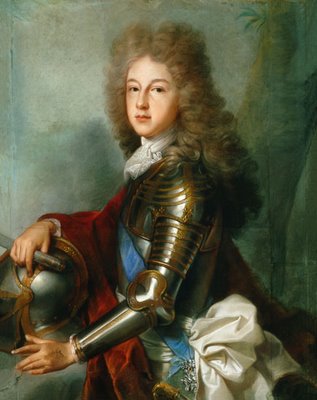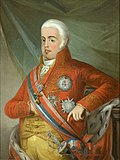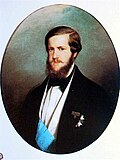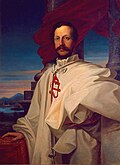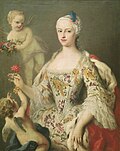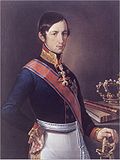| Descendant | Portrait | Birth | Marriages | Death |
|---|
Infante Luis, Count of Chinchón
1727–1785 |  | 25 July 1727
Seville
son of Philip V of Spain and Elizabeth of Parma | María Teresa de Vallabriga y Rozas, Español y Drummond
4 children | 7 August 1785
Vila de Arenas de San Pedro, Ávila
aged 56 |
Luis María de Borbón y Vallabriga, 14th Count of Chinchón
1785–1823 |  | 22 May 1777
Cadalso de los Vidrios
son of Infante Luis, Count of Chinchón and María Teresa de Vallabriga y Rozas, Español y Drummond | never married | 19 March 1823
Madrid
aged 45 |
María Teresa de Borbón, 15th Countess of Chinchón
1823–1828 |  | 6 March 1779
Velada, Spain
daughter of Infante Luis, Count of Chinchón and María Teresa de Vallabriga y Rozas, Español y Drummond | Don Manuel de Godoy y Álvarez de Faria, 1st Duke of Sueca
1 child | 23 November 1828
Paris, France
aged 49 |
Carlota de Godoy, 2nd Duchess of Sueca
1828–1886 | 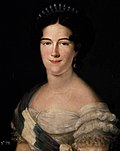 | 7 October 1800
Madrid, Spain
daughter of María Teresa de Borbón, 15th Countess of Chinchón and Don Manuel de Godoy, 1st Duke of Sueca | Camillo Ruspoli
2 children | 13 May 1886
Paris, France
aged 85 |
Adolfo Ruspoli, 2nd Duke of Alcudia
1886–1914 | | 28 December 1822
Bordeaux, France
son of Carlota de Godoy, 2nd Duchess of Sueca and Camillo Ruspoli | Doña Rosalía Álvarez de Toledo y Silva-Bazán, de Palafox-Portocarrero y Téllez-Girón
5 children | 4 February 1914
Paris, France
aged 91 |
Carlos Ruspoli, 3rd Duke of Alcudia and Sueca
1914–1936 | | 1 March 1858
Madrid, Spain
son of Adolfo Ruspoli, 2nd Duke of Alcudia and Doña Rosalía Álvarez de Toledo | Doña María del Carmen Caro y Caro, Álvarez de Toledo y Gomurcio
3 children
Doña Josefa Pardo y Manuel de Villena
no children | 10 November 1936
Madrid, Spain
aged 78 |
Camilo Ruspoli, 4th Duke of Alcudia and Sueca
1936–1975 | | 5 June 1904
Madrid, Spain
son of Carlos Ruspoli, 3rd Duke of Alcudia and Sueca and Doña María del Carmen Caro y Caro | Doña María de Belén Morenés y Arteaga, 18th Countess of Bañares
3 children | 20 November 1975
Madrid, Spain
aged 71 |
Carlos Ruspoli, 5th Duke of Alcudia and Sueca
1975–2016 | | 5 August 1932
San Sebastián, Spain
son of Camilo Ruspoli, 4th Duke of Alcudia and Sueca and Doña María de Belén Morenés y Arteaga, 18th Countess of Bañares | Doña María del Rosario Herbosch y Huidobro, Lodie y Cavanilles
no children | 25 October 2016
Madrid, Spain
aged 84 |
Luis Carlos Ruspoli, 6th Duke of Alcudia and Sueca
2018– | | 4 April 1963
Madrid, Spain
son of Luis Ruspoli, 7th Marquis of Boadilla del Monte and Doña María del Carmen Sanchíz y Núñez-Robres, 13th Marquise of La Casta | Doña María Alvarez de las Asturias Bohorques y Rumeu, Silva y Cruzat
4 children | |
